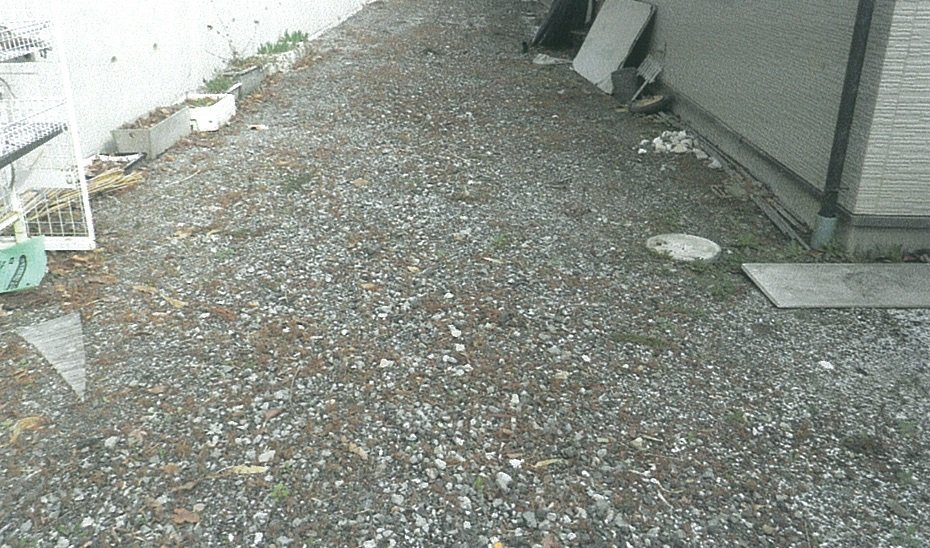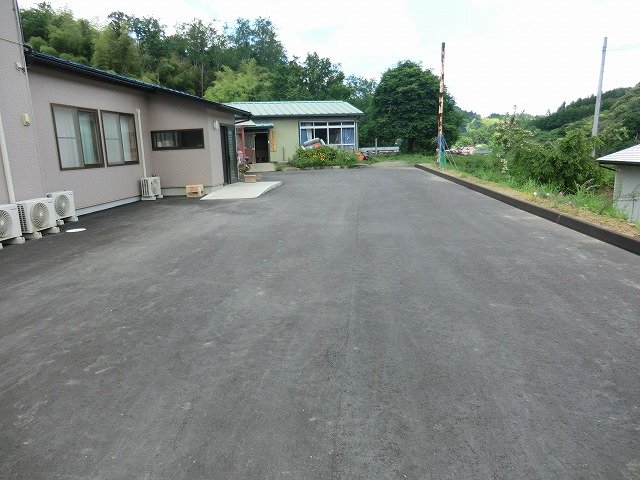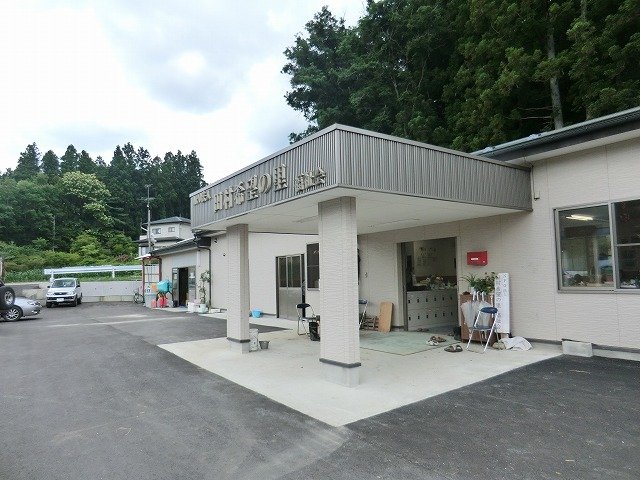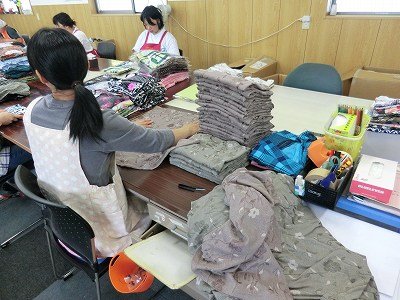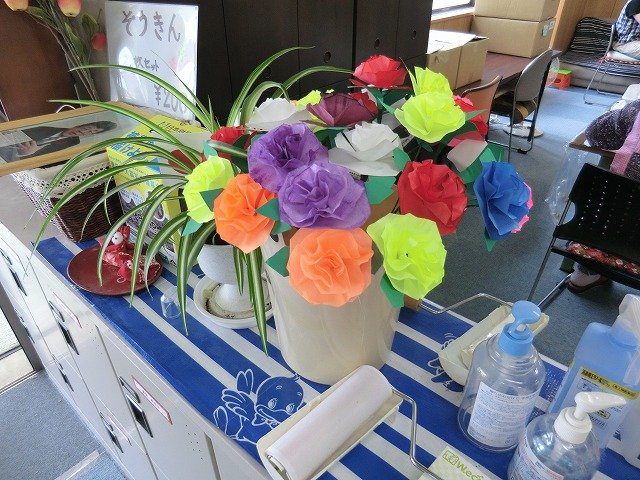By Tomomi Awamura | Programme Coordinator
On June 24th 2013, AAR Japan staff member Masayuki OKADA visited 'Tamura Kibo no Sato', a facility for Persons with Disabilities where we have recently completed concrete pavement work of the ground. Although the construction initially aimed at reducing the risk of radiation exposure by removing contaminated pebbles that covered the ground, it also helped the facility users in wheelchairs to move freely across the property of the facility.
About Tamura Kibo no Sato
Tamura Kibo no Sato is a workshop located in Tamura City, Fukushima Prefecture. It provides job training to approximately 20 persons with mental and physical disabilities and the workshop users are engaged in various work commissioned by companies inside or outside Fukushima Prefecture including folding and bagging of clothes, producing artificial flowers and boxing of gardening kits, etc. The users enjoy working diligently every day, which provides them with opportunity to further participate in the society. Some of the users live in the group home ‘Yu no Sato’ which is located in the same property as the workshop.
Why pavement construction?
The facility is located in the mountainous area approximately 50km away from the Fukushima Daiichi Nuclear Power Plant. The mountainous area is said to be exposed to higher risk of radiation since the radioactive materials can be condensed through the ecological circulation system, hence the facility, of which backyard closely looks onto the mountain, has been very concerned over the risk of radiation exposure. Previously the ground of the property was covered with pebbles but those pebbles became contaminated by radiation following the accident at the nuclear power plant. The facility wished to remove all the contaminated pebbles and pave the ground with concrete rather than replacing the old pebbles with new ones, considering that the newly replaced pebbles will again accumulate a large amount of radiation due to its uneven surface. Thus, we decided to carry out the paving work, which completed in May 2013. This enabled the facility users to concentrate on their job training feeling less worried about radiation exposure. In addition, the paving work also brought another benefit to the facility- the facility users in wheelchair used to have trouble in moving on the pebbled ground which also had level differences and ditches. In response to this situation, the pavement construction was completed in the way to ensure eliminating these barriers. The facility is now prepared to provide better working and living environment, in which the wheelchair users can be more active and independent.
Project reports on GlobalGiving are posted directly to globalgiving.org by Project Leaders as they are completed, generally every 3-4 months. To protect the integrity of these documents, GlobalGiving does not alter them; therefore you may find some language or formatting issues.
If you donate to this project or have donated to this project, you can receive an email when this project posts a report. You can also subscribe for reports without donating.
